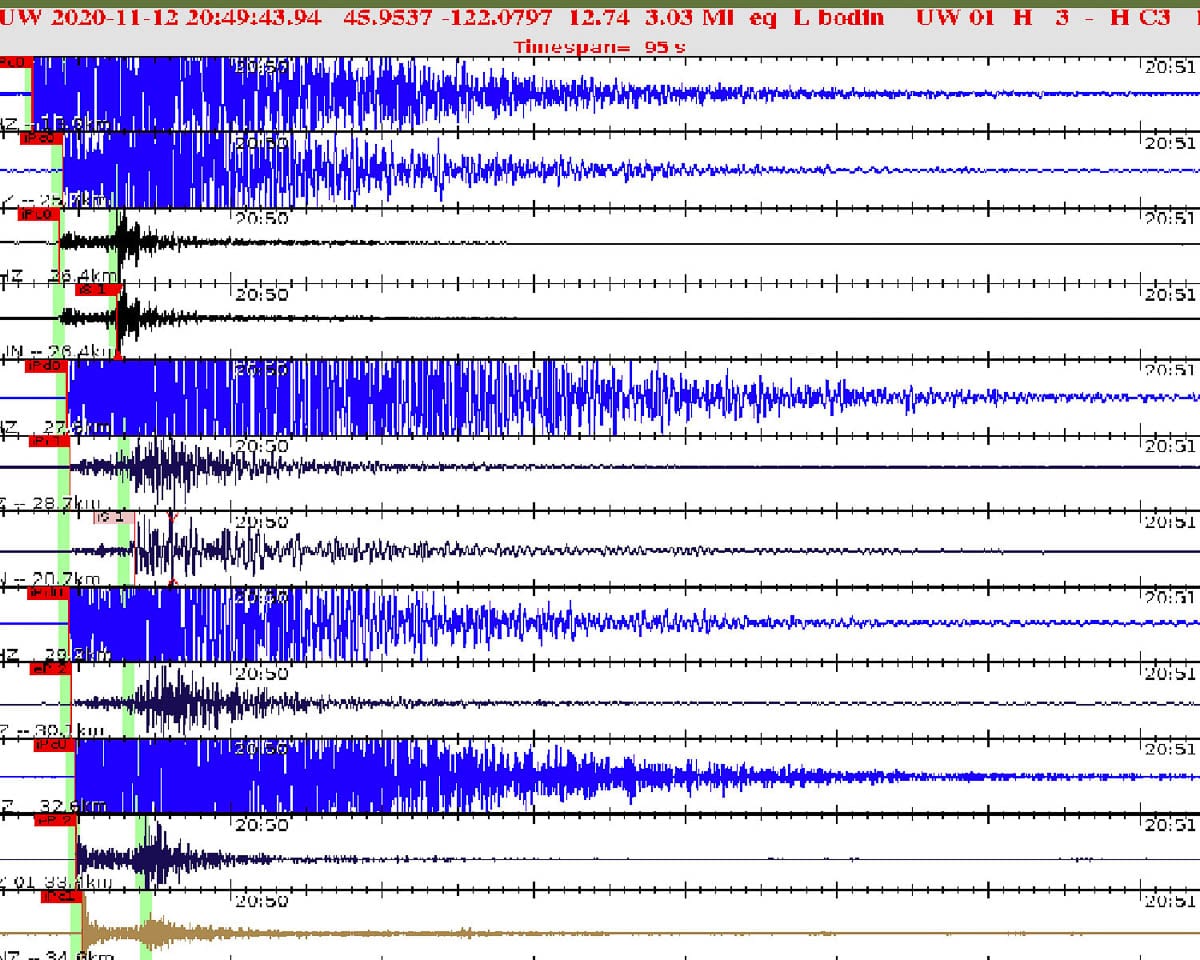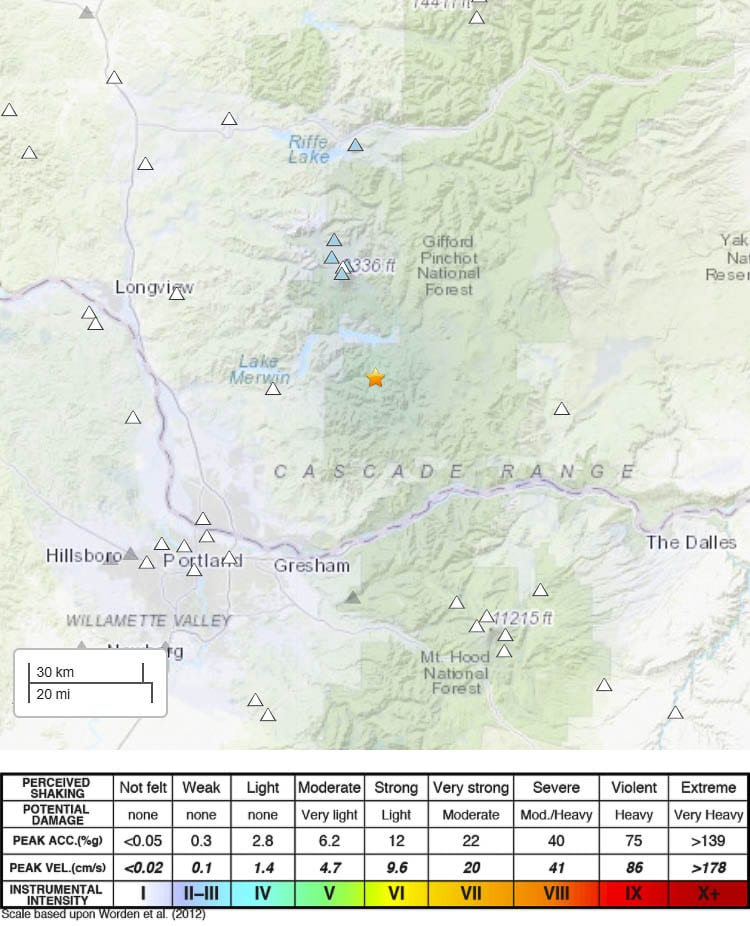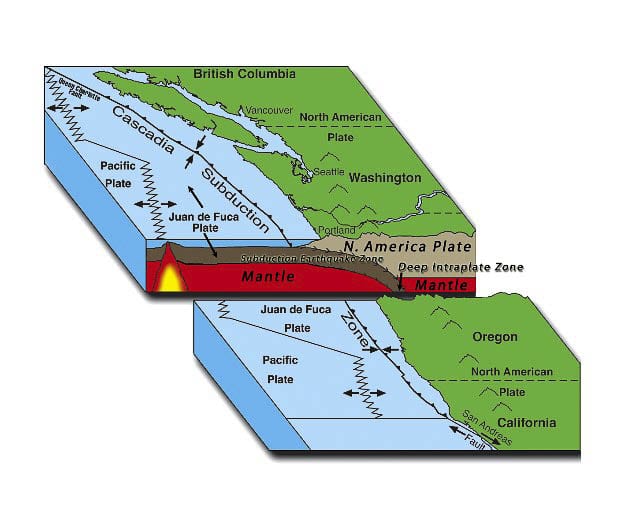The 2.9 magnitude quake hit Thursday afternoon northeast of Yacolt in the Gifford Pinchot National Forest
BATTLE GROUND — A 2.9 magnitude earthquake jolted part of northeast Clark County on Thursday afternoon.
The quake hit at 12:49 p.m., around 17 miles north-northeast of Yacolt, and 25 miles north-northeast of Battle Ground.

People who felt the quake described it as a short, sharp jolt that rattled dishes in the cupboards.
Paul Bodin, a research professor at the University of Washington in Seattle and manager of the Pacific Northwest Seismic Network said they received more than two dozen reports from people who felt the quake, mostly from northeast Vancouver up through Yacolt and Amboy.
“A magnitude three earthquake just takes a second or two slip on the fault,” Bodin told Clark County Today. “They don’t drag on for a long time of intense shaking.”
The quake, which was determined to be around six miles deep, was in the Gifford Pinchot National Forest, in an area known as the Saint Helens Seismic Zone.
“It’s an interesting zone of earthquakes,” Bodin says. “There’s a branch of the Saint Helens seismic zone that goes to the northwest, up toward Morton. And then there’s a branch that goes down to the southeast.”

While the quake was centered in the area recently burned by the Big Hollow wildfire, Bodin says there’s no reason to believe the fire was connected to the earthquake. While landslides can happen in areas recently burned, and sometimes register on sensitive seismic equipment, those waveforms are easily distinguishable from those of a typical quake.
And earthquakes are typical for that area of Southwest Washington.
Data from the US Geological Survey (USGS) shows dozens of small earthquakes on and around this area, most of them centered directly above the sleeping volcano.
It’s a sign, Bodin says, that the volcano likely won’t sleep forever, but not an indication of any imminent activity.
“These usually tend to be a one off in this seismic zone,” says Bodin. “There tend to be isolated earthquakes like this.”
As of Thursday afternoon, Bodin says their equipment had not detected any aftershocks from the small quake.
“There is a small chance that this could be followed by an earthquake of the same size or larger,” he says, “but that chance is really, really, really tiny.”

It’s also not necessarily a sign of anything going on with the Cascadia Subduction Zone, where the Juan de Fuca tectonic plate buckles under the North American plate and is expected to eventually cause a massive quake known as ‘The Big One.’
“This was a tectonic earthquake,” Bodin explains. “It was a slip on a vertical fault, where one slid sideways past the other, not up or down.”
While scientists continue to learn much more about how tectonic plates, volcanoes, and subduction zones interact, it’s generally believed that small quakes on or around Saint Helens are likely to be isolated incidents, and not a sign of some greater seismic activity in the offing.
Still, every jolt or tremor offers up a reminder, Bodin says, that we live in a seismically active area and “should always be as prepared as possible.”
“I don’t think this is going to be the crowning glory problem of 2020, let’s put it that way,” he added.




